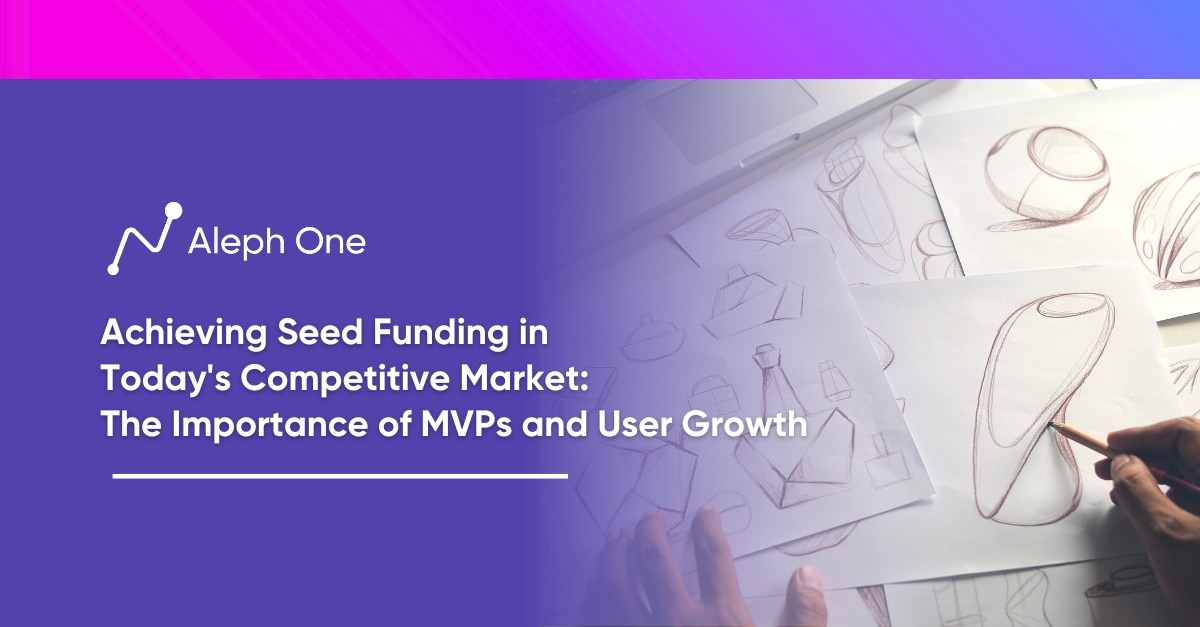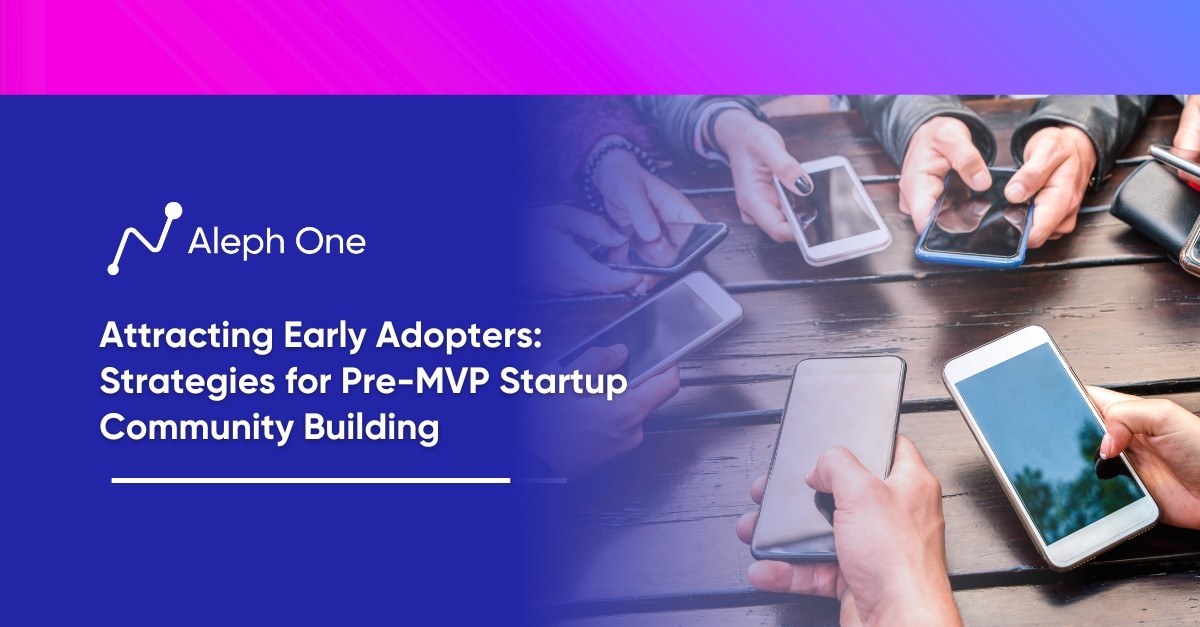Let’s work together to build something amazing. Share your project details and our team will reply to figure out the next steps to your success.

Transforming your visionary idea into a marketable product requires more than just a stroke of genius. It demands a strategic approach, a deep understanding of your customer’s needs, and a relentless drive for innovation. Welcome to an exploration of the world of Minimum Viable Products (MVPs), where we unveil the blueprint to fast-track your startup from conception to real-world impact. In this article, we’ll guide you through the stages of MVP development, from identifying your target customers and their pain points to crafting a sleek design, rapid development, testing, and ultimately, a triumphant launch.

Identify Your Target Customers and Their Pain Points
The first step to building a successful MVP is identifying your target customers and the key problems you want to solve for them. Customer interviews and surveys are the best way to gain insight into their pain points and needs. Ask open-ended questions to understand your customers’ experiences, challenges, and desires. Look for common themes across conversations to determine the most important and impactful issues.
Airbnb’s Affordable Accommodations and Zappos’ Seamless Shoe Shopping
For example, the founders of Airbnb interviewed travelers and hosts to find that affordable accommodations and ways to earn extra income were significant pain points. They built their initial MVP around addressing those specific problems, contributing to their success. Through interviews, the founders of Zappos discovered that finding shoes online was frustrating, so they focused their MVP on selection, photos, and simplicity.
Mining Data for Nuggets of Customer Wisdom
In addition to interviews, analyze your data on your target customers and their behaviors. Look for trends that point to areas of dissatisfaction or opportunity. See if recurring complaints or highly searched questions related to your industry. Through data analysis, the founders of Dollar Shave Club found that men were frequently searching for affordable razors, so they built their MVP around a subscription model that solved that problem.
Extracting Information from Customer Surveys
Surveys can also provide useful insights as long as you ask targeted questions. Keep surveys brief, with a mix of open-ended and multiple-choice questions. Ask people to rank or rate the importance of various issues or features to determine priorities. The key is determining the problems that are most painful and relevant to the largest number of your potential customers.
Laser Focus for Success
Focus your MVP on addressing those specific problems and the needs of your target customers. Stay focused on other possible features or directions. An MVP should solve actual problems for real potential customers, not hypothetical issues. Talk to people, analyze data, and survey your target market to find the pain points you need to fix immediately. Build your MVP around the solutions to those problems to set yourself up for success.
Map Out Your MVP Features
Once you have identified your target customers and their key pain points, the next step is to determine the minimum set of features that will address those needs. Focus on the core problems you want to solve for your customers and avoid unnecessary bells and whistles. Prioritize features based on importance to the customer and feasibility to build.
Feature Mapping: Must-Have vs. Nice-to-Have
To map out your MVP features, start by listing all the possible features that could solve your customers’ problems. Then categorize each feature as “must-have,” “nice-to-have,” or “not needed.” The must-have features should be the bare minimum to create value for your customers. Those are your MVP features.
Dropbox’s Focus on Core Features
For example, when Dropbox launched their MVP, their must-have features were file storage and syncing. They avoided advanced features like collaboration, encryption, and versioning history, which were added later. This laser focus on the core features allowed them to build quickly and start gaining traction.
Effort Estimation: Crafting a Lean MVP
Once you have defined your MVP features, estimate the effort required to build each feature. If there are more must-have features than you can build quickly, further prioritize them based on impact and ease of implementation. You may need to make some tough choices to keep your MVP small enough for rapid development.
Crafting a Feature Roadmap for Customer Engagement
It is also important to consider how to release new features over time to keep customers engaged. Map out a potential roadmap of how you will continue enhancing your MVP by adding additional features and functionality over the coming months based on customer feedback. But keep your initial MVP as small as possible—you can always trust that more features will be requested, but you only have one chance to make a first impression.
Keep Your MVP Compact and Impactful
By identifying your must-have features and prioritizing ruthlessly, you can design an MVP that solves key customer problems while still being small enough to build quickly and start gaining traction. Keep your initial feature set as minimal as possible, then enhance it over time based on feedback to provide the most value to your customers.
Design Your MVP
The design of your MVP is critical to its success. While the features are minimal, the user experience must be high quality. Take time to understand your target customers and design an MVP that intuitively addresses their needs. Apply design thinking by putting yourself in your customers’ shoes to determine how they will interact with your MVP.
Crafting a Clean and Focused Design
Keep the design simple and focused on the core features you want to test. The interface should be clean and easy to navigate. Only include the necessary screens and eliminate any clutter or distractions. The functionality has to match what you have defined in your feature set. Ensure there are no broken links or error messages that could frustrate your customers.
Elevating User Experience Through Aesthetic Details
Pay attention to visual details like font, color scheme, and layout to make the experience as pleasant as possible. Even though the MVP is basic, customers will form an impression of your startup based on the design. An amateurish look and feel reflects poorly on your brand and credibility. Consider working with a designer, at least for initial mockups and wireframes. They can apply user experience best practices to optimize the flow and interface.
Test, Refine, and Deliver a Smooth Experience
Test the design with target customers to identify any issues before building out the full MVP. Make any necessary tweaks to ensure a smooth experience for your testers. The design is never final, and you will continue improving it based on customer feedback. But start with a design that addresses key needs and is visually appealing.
MVPs That Mastered Design
Examples of startups with well-designed MVPs include Mint, Buffer, and Dropbox. Mint’s first personal finance app was simple but elegant, focusing on key features like budgeting and bill pay. Buffer’s MVP social media dashboard was minimal but intuitive. And Dropbox launched with a video explaining cloud storage and a clean file upload interface. The design of these MVPs matched what their target customers needed and helped propel their success.
User-Centric Elegance
Apply similar principles to design an MVP your customers will love. Keep it simple but high quality. Focus on user experience. And continue optimizing the design based on feedback to build the best product for your customers. With a well-designed MVP, you’ll gain the traction and validation needed to scale your startup.
Develop Your MVP Rapidly
To build momentum, developing your minimum viable product (MVP) as quickly as possible is critical. The faster you can get your product in front of real customers, the faster you can gather feedback and improve. There are several techniques startups use to accelerate MVP development:
Building Your MVP with External Experts
Outsourcing development is a great way to build an MVP quickly without hiring full-time engineers. Websites like Upwork and Fiverr provide access to freelance developers that can build a basic digital product for a few thousand dollars. Many startups have used outsourcing to create their first MVP, then used customer feedback and revenue to hire full-time staff.
No-Code Empowerment
No-code tools allow non-technical founders to build and launch an MVP without writing a single line of code. Services like Bubble, Webflow, and Carrd provide drag-and-drop website and mobile app builders. Many successful startups have used no-code tools to design, build, and launch their first MVP. These tools are easy to use and can produce professional results.
Swift MVP Development Through Lean Methodology
Agile development using a lean startup methodology is key to rapid MVP development. This involves building the absolute minimum set of features, launching quickly, gathering customer feedback, and then iterating. Startups using this approach focus on short development cycles, continuous improvement, and adapting based on customer input. Releasing something basic but usable as fast as possible is the goal.
Successful Startups’ MVP Strategies
Successful startups have built and launched their first MVP in days or weeks using these techniques. For example, Buffer built their first MVP in just 7 weeks using outsourcing. Dropbox launched their MVP in just 3 months using agile development with a small team. No-code tool Webflow allows startups to build an MVP website in just 1 day. The faster you can build and launch your MVP, the faster you can start getting real customer feedback and gain momentum. Rapid development is key to startup success.
Test Your MVP and Get Customer Feedback
Once you have developed your MVP, it is critical to test it with real customers to validate your key assumptions and get feedback to improve the product. Conducting customer testing, also known as beta testing, with a small group of target users helps determine if your MVP solves the problems you have identified and provides value to customers.
Gathering Insights from Your Target Audience
To test your MVP, first recruit 5 to 10 customers from your target audience to evaluate the product. Provide them with clear instructions for using your MVP and ask open-ended questions about their experience to get qualitative feedback. Meet them in person or via video chat to get direct feedback and observe their interactions with your MVP.
Analyzing Feedback
Analyze the feedback to identify key themes, issues, and suggestions for improvement. Look for feedback that confirms your MVP solves a real problem for customers and indicates necessary changes. The feedback may lead to pivoting your solution or adjusting your key features and functionality.
Chime’s MVP Testing That Led to Success
For example, mobile banking startup Chime tested their initial MVP with a few hundred customers. Based on feedback, they made key changes to their fees, balance alerts, and other features before launching to the public. This early testing and validation allowed them to release a product that truly resonated with customers, leading to their success and exponential growth.
Using Metrics to Measure MVP Performance
In addition to qualitative feedback, look at key metrics to evaluate how customers use and interact with your MVP. Metrics like customer acquisition, retention, usage, and churn rates will indicate if your MVP provides real value. Continue testing with additional customers over time and updating your MVP to improve the experience.
Continuous Improvement
Constant testing and iteration based on customer feedback is key to building a successful MVP and startup. While it may require additional time and resources, it ensures you are solving a real problem for customers and meeting their needs. The validation you gain will give you the confidence to scale your startup.
Launch Your MVP and Start Scaling
Once you have tested your MVP and incorporated customer feedback, it’s time to launch it to the public and start scaling your startup. A successful MVP launch requires planning the right marketing and growth strategies to gain momentum.
1. Determine Distribution
First, determine how you will distribute your MVP to reach your target customers. This could include social media marketing, content marketing, paid advertising, email marketing, or partnerships. Focus on channels where your customers are already active. Keep your messaging focused on the key benefits and solutions your MVP provides to customers.
2. Establish Key Metrics and Benchmarks to Measure Performance
Next, establish key metrics and benchmarks to measure how well your MVP is performing. This includes metrics like customer acquisition costs, customer lifetime value, churn rate, monthly recurring revenue, and viral coefficient. Monitor these metrics closely after launching and adjust as needed to optimize growth.
3. Establish Strategic Partnerships
Third, start forming partnerships and strategic alliances that can help scale your startup. Look for companies that serve the same target customers or provide complementary products and services. Partnerships are an opportunity to cross-promote to new audiences and build your credibility.
4. Optimize Conversion Rates and the Customer Experience
Once you gain initial traction, optimize conversion rates and the customer experience. Make any final tweaks to your MVP based on feedback and usage data. Then start expanding into new market segments and building additional features and offerings to keep customers engaged.
The key is to start simple but think big. An MVP is just the first step – with the right vision and execution, it can evolve into a transformative product and scale into a thriving business. Follow the strategies of successful startups and keep optimizing, expanding, and growing your MVP into something great.
FAQ
Given the numerous examples provided, how essential are the initial user interviews and feedback in shaping the trajectory of a successful MVP?
User interviews and systematic feedback collection are crucial in developing a successful MVP. These initial interactions give entrepreneurs a solid understanding of their target customers’ pain points and the solutions they seek. By leveraging these insights, businesses can shape their MVP around specific customer needs, securing a higher probability of success and market adoption.
How can entrepreneurs balance the need for quick MVP development with ensuring a good, intuitive user experience?
Balancing speed and quality in MVP development can be a challenge, but it’s not impossible. The key is to focus on the core features that satisfy the identified customer pain points and build them with an emphasis on usability and simplicity. Leveraging lean and agile development methodologies can help businesses create functional products swiftly. Furthermore, early user testing helps identify potential issues and improve the user experience, even within a short timeframe.
What strategies can newly launched MVPs employ to gain customer traction and start scaling?
Gaining traction with a newly launched MVP involves a well-planned marketing strategy and continual optimization based on user feedback. Strategies can include leveraging social media marketing, content marketing, email marketing, and paid advertising. Businesses should also consider partnerships with other companies that serve their target customer base. Consistently monitoring key performance metrics and using the insights to improve the product and customer experience is crucial for scaling an MVP.
Get the latest news and updates from Aleph One in your inbox.



